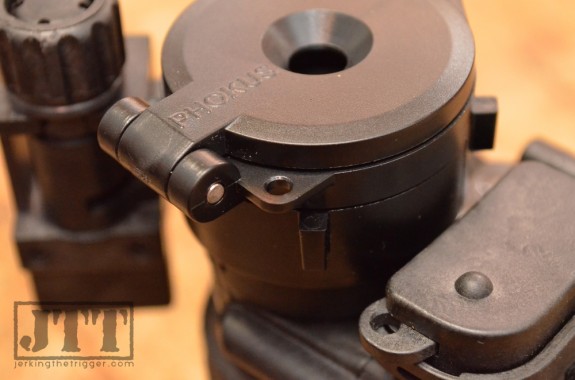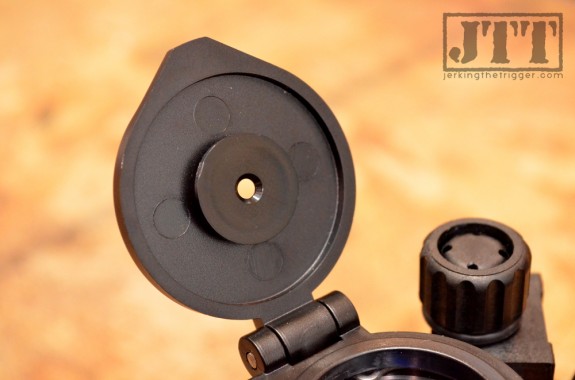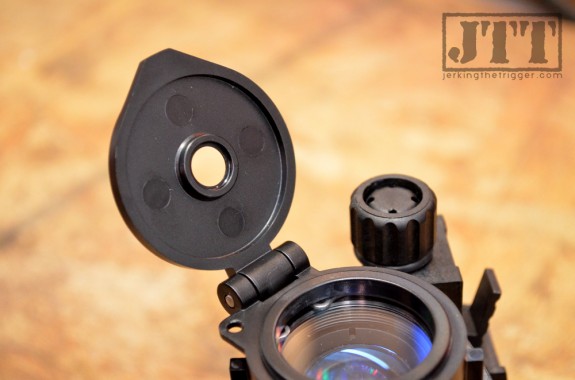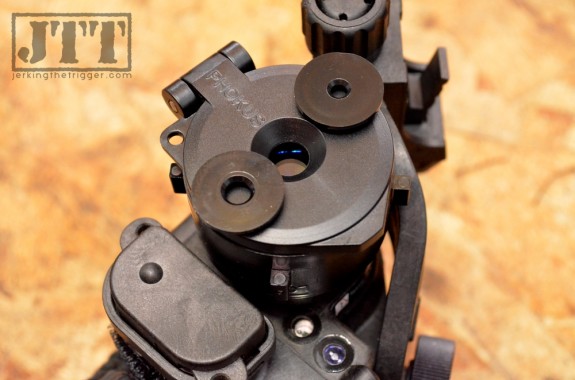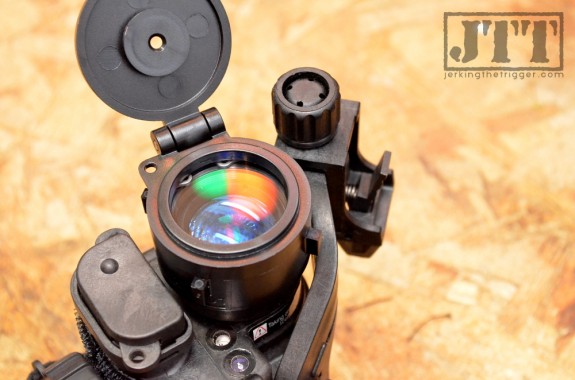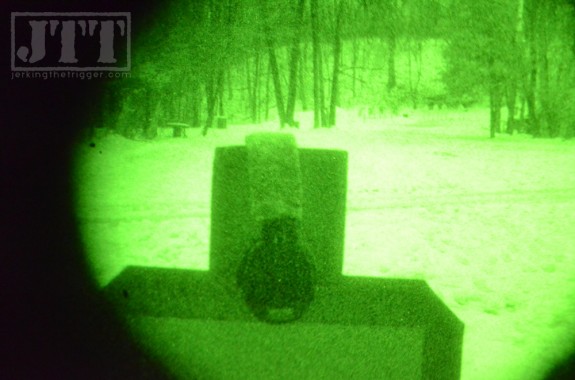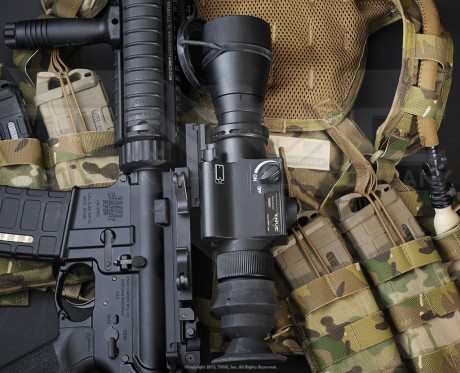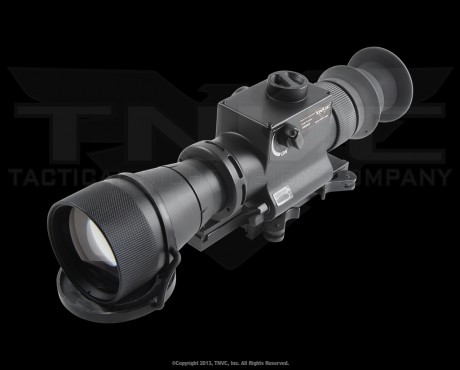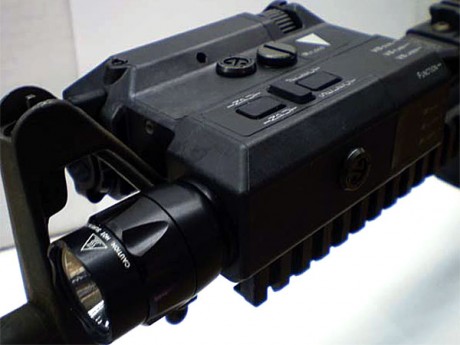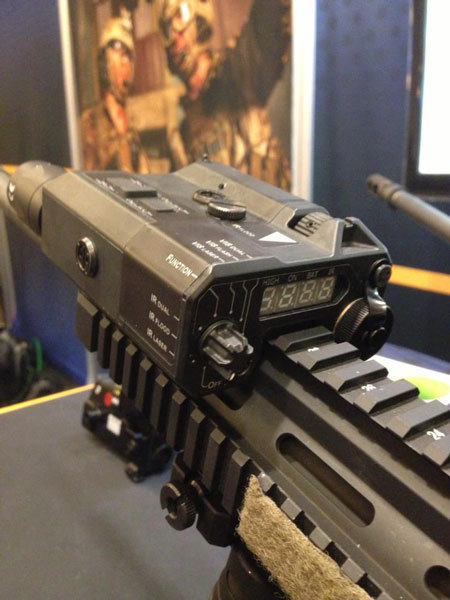Night Vision is a tremendous resource for LEO, military, and the prepared citizen. It is not inexpensive but it is best thought of as an investment. If you have invested in something so costly, why wouldn’t you spend a little more to make sure you had the right gear to maximize and protect your investment? That is exactly what the Phokus Research Group Hoplite does.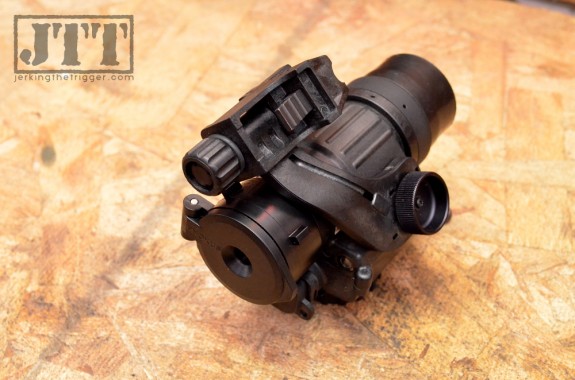
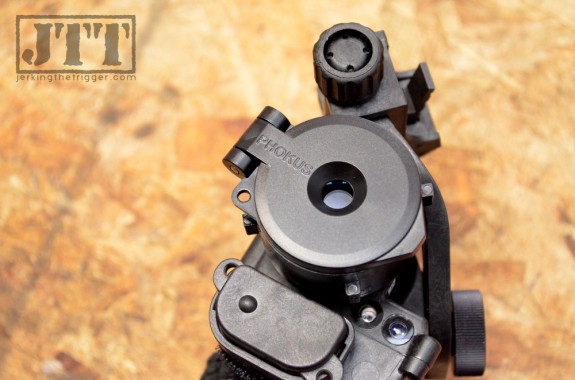
Overview
The Hoplite is a plastic cover for night vision devices that primarily alters the way that the device can be focused so that objects both near and far can be in focus and secondarily protects the objective lens from damage. It focuses the device via an adjustable aperture (3 sizes included) on the cap and protects the lens via a sacrificial lens that is always in place over the objective lens when the Hoplite is installed.
It looks very much like a scope cap but you need only to put hands on it to see that its quality far surpasses a typical scope cap. Scope caps wear out in three places – the spring that snaps them open, the friction lock that keeps them closed, and the hinge. The Hoplite doesn’t have a spring to break or wear out. It doesn’t have a friction lock. Instead, it relies on a large, well-constructed hinge to stay in the open and closed position.
The Hopelite attaches to the night vision device via a tension lock mechanism that is very secure.
Observations from Use
You only need to look through a Hoplite equipped night vision device one time to understand how valuable it is. It allows you to focus your device for “infinity” and then never touch the focus again. Without the Hoplite, that would mean that distant objects are in focus but near objects are blurry and unrecognizable. The Hoplite allows both and near and far objects to be in focus simply by closing the cap.
The difference that the Hoplite makes is readily apparent. One of the most dramatic examples that I can think of from my time with the Hoplite is that it was actually possible to peer into the chamber of a carbine at arm’s length and focus well enough to identify what type of malfunction you might be dealing with while still being able to glance down range and see targets in perfect focus.
I recommend that you spend a little time learning which aperture works best for you. The smaller apertures will allow you to focus closer than the full open aperture. However, we noticed that there is a pretty heavy trade-off that comes with the smaller apertures. They greatly reduce the amount of light that makes it into the device so as you decrease the aperture size, you greatly increase your dependence on an illuminator. If you don’t have a solid illuminator set up when using the smallest aperture, the image you see through the device will be very grainy and may be unusable.
One of the night vision owners that checked out the Hoplite with me was thrilled to see the sacrificial lens built into the Hoplite. He felt that was a very strong secondary benefit given that night vision devices are not cheap and there is supply chain support for the civilian night vision owner. Any protection that you can give the objective lens is invaluable.
Wrap Up
The Hoplite’s ability to correct the focus shortcomings of night vision devices while also protecting it from damage make it indispensable. I can’t think of a reason not to own one if you have already made the investment in night vision.
Check out the Phokus Research Group Hoplite.

